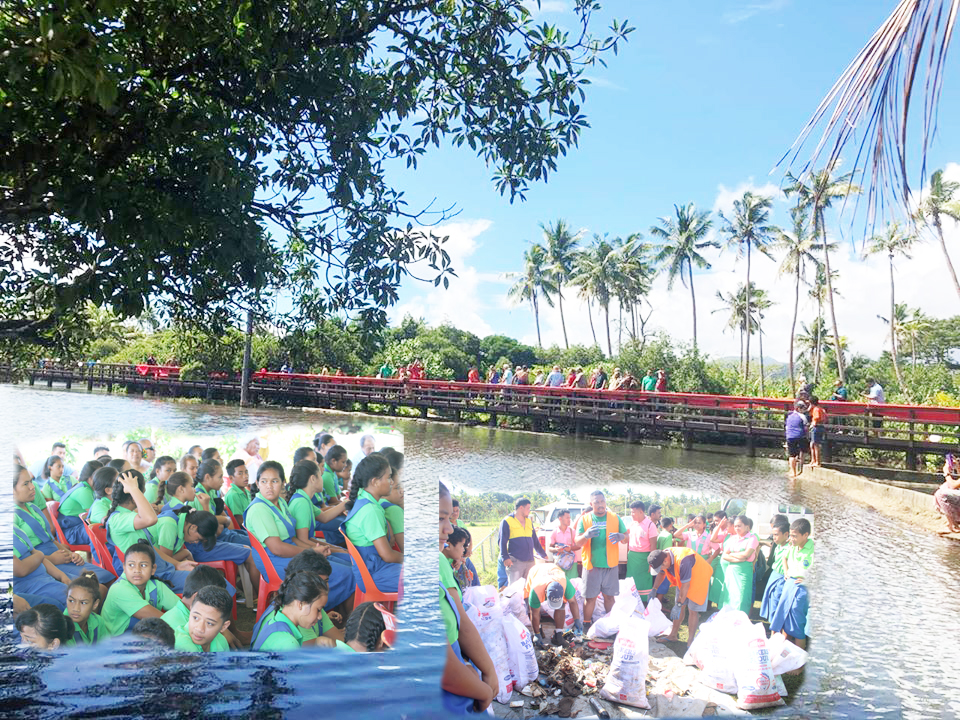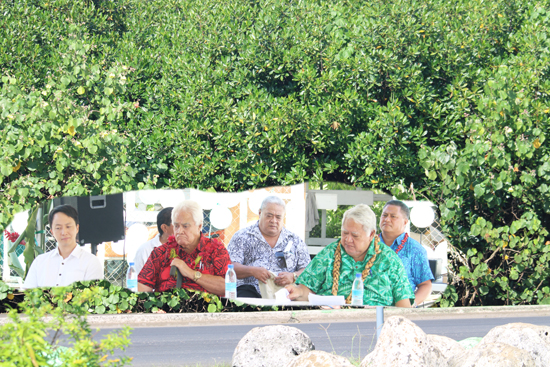

By Staff Writer
The Moata’a Mangrove project and the total commitment to its care and maintenance, won high praises during the week as a shinning example of an ideal community response to the threat of climate change.
The mangrove sits in the heart of Moata’a Village and has received a lot of encouraging support from the international donor community and Government.
The Prime Minister Tuilaepa Sailele Malielegaoi led the praises at the launching of the mangrove and coastal restoration project at the Moata’a sports ground last Friday.
“The project is the best example of village leadership working together in partnership with Government and donor partners to protect our environment from the damages of climate change,” PM Tuilaepa applauded.
“ The problem with mangroves is the tendency by many to turn it into a rubbish dump.
“Vaitoloa is the example but the dumping of rubbish is now shifted to the Tafaigata landfill,” he added to underline the serious emphasis by Government on a healthy environment.
The PM voiced the fears by Samoa and other neighbouring island countries at the dangers of climate change and the need for environment protection.
Concerns continue to run high that small island countries including Samoa could be underwater by 2100 at the rate the sea level is rising.
The general outcry in the island region at this time of the COVID-19 pandemic is that climate change is worst.
“The pandemic only affects people whereas the damages from climate change is everything,” PM Tuilaepa continued.
He also echoed the regional concern that donor countries may re-direct their resources for their own protection, if recipient countries are not serious about climate change projects and policies.
The setting up of the Ministry of Natural Resource and Environment underline Samoa’s early commitment to the protection of her natural surroundings.
The PM noted the early concerns at overfishing of local reefs with many of the common seafood starting to disappear from commercial fishing.
“Government felt it was a must to come up with hard policies regardless of unpopular public reactions to safeguard our natural resources and environment.
“ The intention is not to please the public but to look beyond into the future and generations to come.”
US Charge d’affaires in Samoa, Jonathan Yoo, agreed with the value of having an effective working partnership between the local community and donor support.
The US Department of Agriculture and Forest Services offered their support with a grant to the Moata’a project that included a greenhouse and gardening tools.
“ This is a perfect example of how a small grant can be wisely, efficiently and effectively used to benefit a village community,” Yoo said.
The European Union funded a garden toilet for the project.
Member of Parliament, Lenata’i Victor Tanumapua, who also sits in the Moata’a Village Council plays a co-ordinating role as the link with the Government and donors partners.
He and the Village Project Steering Committee Chairman Lenata’i Levine Siemu, organised the Friday launching.
All village children from pre-school up to primary and college levels attend as the young generations who are the long-term targets of the project.
“The heart of this part of the project is education and awareness of the young generation who will step in when we are long gone,” Lenata’i Siemu explained at the launching.
“This is a global problem and it is important for the incoming generations to know.”
He said the rising sea level is already felt in the village where the sea is now reaching places on dry land not reached before.
Study interests have already been indicated from outside research institutions to visit and learn from the mangrove.
